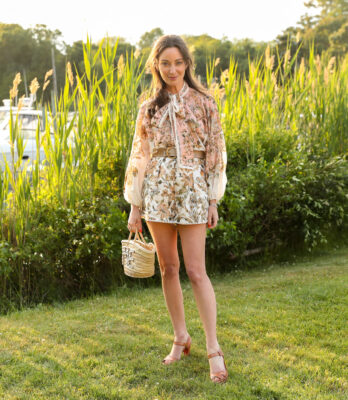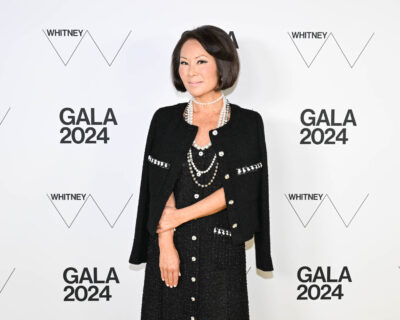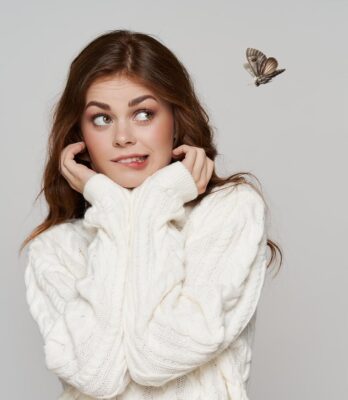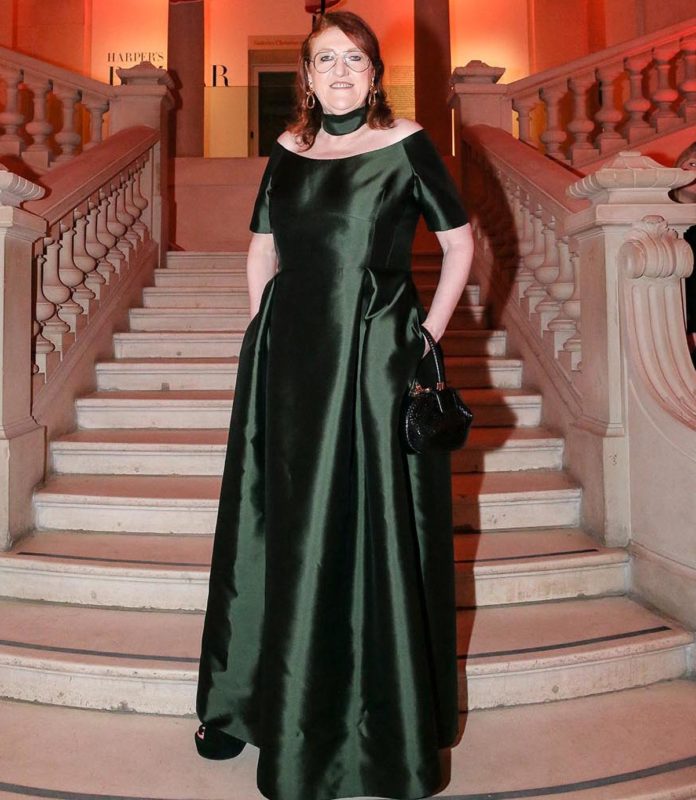
Fashion
There is Nothing Like a Dame
Glenda Bailey, doyenne of women’s fashion magazines, looks back on her highs, her lows—and her newest venture with alpacas.
British-born Glenda Bailey has been at the top of magazine mastheads for three decades, first at Marie Claire UK, then at the U.S. edition, and finally, until 2020, at Harper’s Bazaar. That’s a remarkable achievement by any calculation, made more notable by her decision in 2020 to ‘cross the aisle’ and try her hand at designing her own collection. Bailey sat down with Digital Party to reflect on innovation, inspiration—and aiming for the stars.
DP: Last year, you created your own collection for Peruvian Connection. How did that come about?
Glenda Bailey: What attracted me to the project was the fact that Annie Hurlbut Zander has been producing her collection in a low-key manner for the past 50 years, and she has created this tremendous relationship with local craftspeople in Peru. I wanted to learn about sustainability from somebody who hasn’t suddenly woken up to the fact that this is vitally important.
DP: And the collection used alpaca?
GB: Yes. People don’t realize that alpaca is more sustainable than cashmere. The animals have padded feet rather than hooves, so they are very gentle on the soil, and they live at high altitude. Artisans can earn a living locally rather than coming down to cities to work. Alpaca is sustainable—not just in terms of production, but also people’s lifestyle.
DP: What was it like to be designing after all those years as an editor?
GB: Annie’s team is so talented, so I could really lean on my editor skills. Having gone to the collections for many years, you’re used to identifying what will be popular—“This is going to be fashionable in 18 months’ time; these are the colorways I think people will respond to.” And my first job out of Kingston [University, in the UK] was fashion forecasting, which taught me about predicting what’s next. Forecasting involves looking at everything going on in the culture that might influence fashion, from politics to sports to science—taking into account, too, concern for the environment and advances in technology.
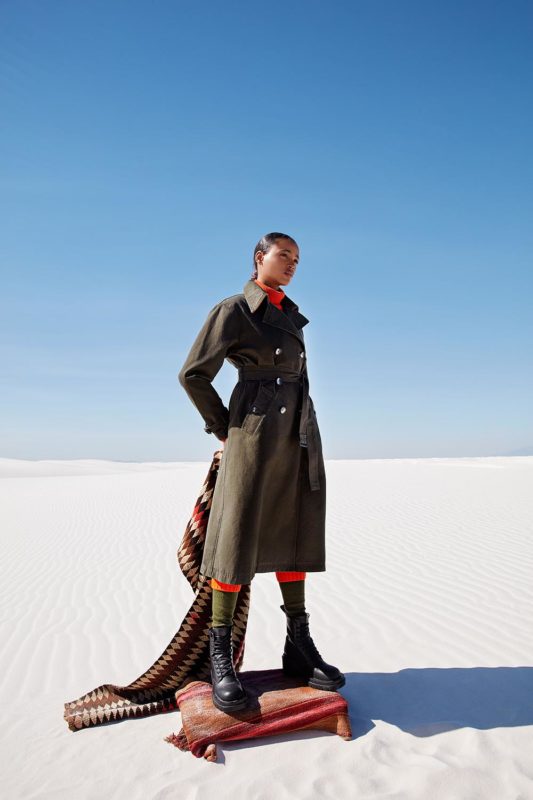

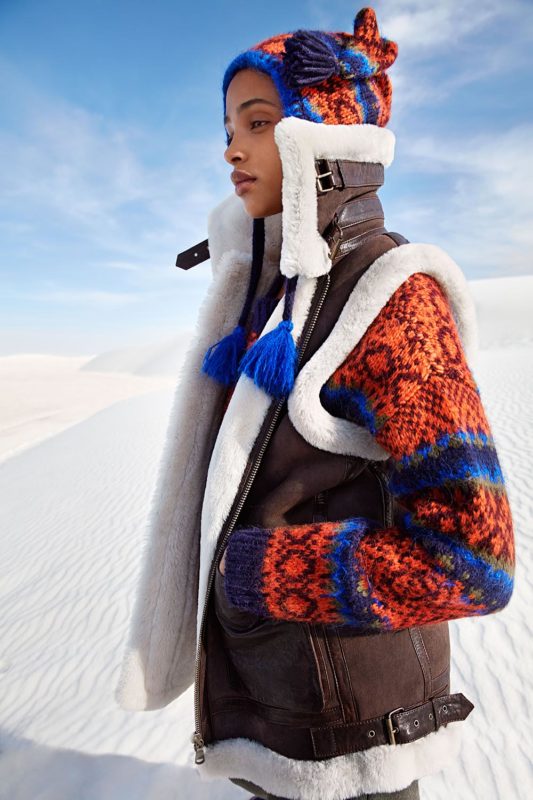
DP: Growing up, was being an editor in your sights?
GB: I’ve always loved all forms of culture. I love to read; I love to go to exhibitions. Every Sunday afternoon, I’d watch old movies. I was keen to do something which would appeal to my interests. Fashion was one of them.
I was lucky enough to win awards at Kingston, but realized I was never going to be the next Karl Lagerfeld. I would look at other people’s collections and think ‘they’re going to be incredible stars and icons of the future.’ I’ve always had high standards and am very realistic about what my strengths are and what I’m not so good at. I thought I could be a good designer but not a great one and I might be able to make more of a significant difference by being an editor.
DP: How did you break into the magazine industry?
GB: My mother had died when I was at Kingston. And shortly after I left college my father got cancer. [My partner] Steve and I went home to nurse him. It was a difficult time, in every way. There’s nothing like losing everything to focus on what you really want to do.
After my father passed away, I went to London. I got off the coach, called Colin Reeves-Smith, who oversaw luxury magazines at IPC, and requested a meeting with him the next day. That night, I wrote a proposal for a fashion magazine, and I presented it to him.
I had done my final year dissertation on IPC, which meant I knew a lot about what was going on in his magazine group. I felt I could see an opportunity in the market, for a fashion and beauty magazine that was aspirational—an opportunity to dream—but at the same time, accessible. I suggested a magazine that wasn’t pretentious but in praise of the individual. Instead of dictating to the readers I wanted to not stereotype women but empower them to feel good. I also focused on the importance of great photography and typography. I was very inspired by some of the independent publications at the time, such as The Face. He took a tremendous risk in giving me the opportunity to develop a new magazine, Folio.
DP: A couple of years later you launched UK Marie Claire.
GB: I read that French Marie Claire founder Évelyne Prouvost-Berry was looking to produce a British edition. I had pneumonia at the time, but I leapt from my sick bed, tracked down Colin at a party and convinced him to support me. I contacted Évelyne—although I can’t speak French—and she agreed to meet me. The next day, she sent a telegram—which I still have—saying she’d like me to be editor in chief.
DP: After eight years at Marie Claire in the UK you came here to edit the U.S. edition, and then moved to Harper’s Bazaar.
GB: I’m immensely proud of what we achieved at Marie Claire. To think that a fashion magazine could win Amnesty International awards for journalism. But, having edited it for 13 years and still in my thirties, I wanted a new challenge. I felt it was time to get back to my first love, and to try to reinvent a fashion magazine.
DP: You’ve been responsible for some iconic covers in the last 30 years. Do any stand out for you?
GB: At that time, celebrity PRs wouldn’t allow their clients to do anything other than have their portrait taken and speak to a journalist with a stock set of answers.
What I’ve always said about my magazines is that I love to create a party that everyone’s invited to. I wanted every story to have something innovative and unique.
So, it was natural to me to ask whether celebrities would consider doing something extraordinary. People responded because they, too, were bored with the same old interviews.
One of my favorite covers was Demi Moore. I had been to see what we didn’t realize at the time was Lee McQueen’s last collection. I had this vision of Demi standing at the top of a spiral staircase set in sand, wearing the big armadillo shoes. But that image would be too slim; we needed something extra. She should be feeding an apple to a giraffe.
When I read that Rihanna was a great swimmer, it seemed obvious to ask her if she would mind swimming with sharks.
We shot Jennifer Lopez walking a tightrope, and Julia Roberts—who is afraid of heights—scaled a mountain in a couture dress.
All these take your breath away.
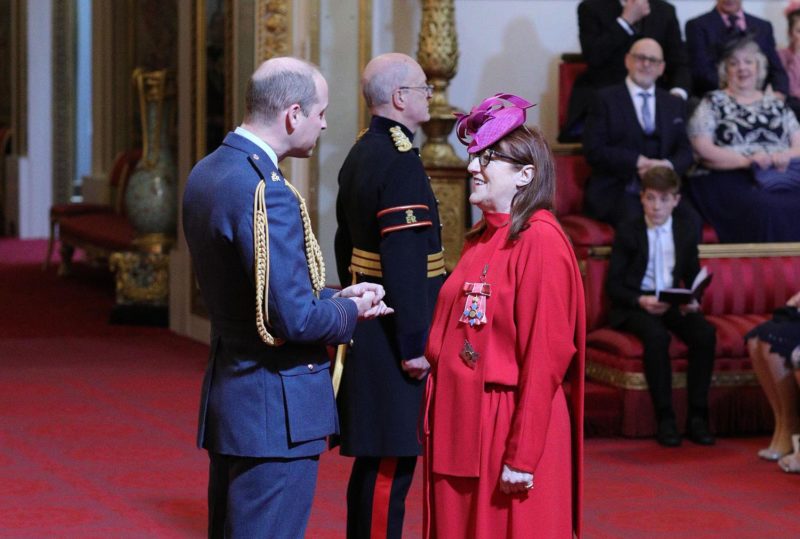

DP: Talk a bit about the source of your creativity.
GB: I am a good listener. I get inspired by all sorts of conversations. And it’s a collaboration of the great talents of my team.
Often, they would say “No, this is truly impossible”—and then we’d produce it. What also spurred on our creativity was that we never had huge budgets. It made our imagination work doubly hard. Good is the biggest enemy of great, and I wanted to produce great magazines.
DP: How did it feel to be awarded an OBE and then named a Dame?
GB: I felt tremendous pride. I’ve worked hard throughout my career, and it was great to be acknowledged in that way. I was touched by how much the Queen knew to talk to me about my work. She was very informed and knowledgeable.
Years later, the Queen sat for a portrait by David Bailey for the American and international editions of Harper’s Bazaar to celebrate GREAT, the marketing campaign that promotes the best of the UK abroad (and for which I’m an ambassador.)
DP: What is your proudest achievement?
GB: The number of journalists on my team that have become editors-in-chief—17 at the last count.
DP: What does the future hold for the magazine industry?
GB: Like fashion, magazines need to evolve.
I love digital technology. It’s improved communication. It’s made it much faster. Much easier. It’s given everybody a voice.
I love the fact that everybody can be an editor now. I love the fact that you can get your news within seconds of it happening. But there’s a tremendous amount of noise.
To be able to write from a position of knowledge and experience is something to be treasured. Magazines that survive will be the ones that understand their readership and can reflect changing times. There is tremendous opportunity—particularly in the luxury sector.
DP: What’s next for you?
GB: Having been a consultant for a couple of years, I’ve concluded I’m best at editing—and I’m looking forward to new ventures.
DP: What would you tell somebody just starting out?
GB: Work hard, really learn about your subject, be a specialist, and you can create something truly memorable.
Be fearless.
Glenda Bailey’s PC x GB collection is available from Peruvian Connection
Lead image: Bailey at a party to celebrate Harper’s Bazaar: First in Fashion, an exhibition at the Musée des Arts Décoratifs in Paris in February 2020 ©BFA 2023, Matteo Prandoni
